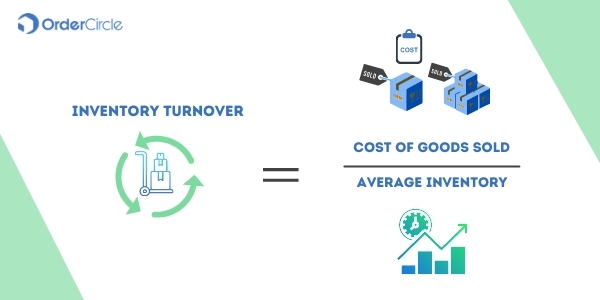Inventory Turnover
Hasan Nasir

A successful business has an efficient inventory management policy. It means that it timely meets customer demand while controlling costs. This helps in improving the profitability of the business. Inventory turnover is an indicator of the efficiency of inventory management.
What is inventory turnover?
Inventory turnover is a financial ratio. It indicates the number of times a business has sold its inventory during a particular period. This period is usually one year. Calculation of inventory turnover is important for warehouse management as it helps a business avoid over-stocking and under-stocking. It also indicates the level of dead stock in a business.
A high inventory turnover indicates quicker sales. It shows that the product of the company is in good demand. A low inventory turnover indicates weak demand. A business with high sales volume usually has a high inventory turnover. Few examples of such businesses are supermarkets, provision stores, etc.
Calculating the inventory turnover ratio:
Let us understand how to calculate this ratio.
Inventory turnover depends on two things. These are:
- Cost of goods sold,
- Average inventory
Formula:
Inventory Turnover Ratio = (Cost of Goods Sold) / (Average Inventory)
Let us understand each of these in detail.
- Cost of goods sold:
The cost of goods sold is also referred to as COGS. It is the cost incurred to produce the goods which are sold during a year. The costs include direct costs such as raw materials, labor, and transportation. COGS gives an idea of the production costs of a business.
COGS = inventory at the beginning of the year + Purchases during the year – Inventory at the end of the year
COGS is included in the profit and loss statement of a business. It helps in determining the profitability of the company.
- Average inventory:
This is simple to calculate.
Average inventory = (Opening inventory + Closing inventory) / 2
We need to find the average of the opening and closing inventories. We have understood how to calculate the inputs to determine the inventory turnover ratio.
Let us now understand how to calculate this ratio with the help of an example:
Say, for example, ABC Inc. is in the business of selling umbrellas. At the beginning of the year, it has umbrellas with a total cost of USD 40. It purchases more umbrellas at a total cost of USD 170 (including transportation) during the year. At the end of the year, it has 6 umbrellas left, worth USD 60.
Based on the above inputs, let us calculate the COGS:
COGS = USD (40 + 170 – 60)
= USD 150.
Let us now calculate the average inventory:
Average inventory = USD [(40+60)/2]
= USD 50
Based on the above inputs, we now calculate our inventory turnover ratio:
Inventory turnover ratio = COGS / Average inventory
=150 / 50
= 3 times
It means that a company has sold its inventory 3 times in a year.
Importance of the inventory turnover ratio:
This ratio shows how well a company is converting its inventory into sales. Thus, the inventory turnover ratio indicates how good the demand for the product is. If a company has a low inventory turnover ratio, it shows that demand is low. Good demand is reflected in a high inventory turnover ratio.
This ratio also indicates how well the purchase and sales departments are coordinated. It shows whether the company is holding too much or too little inventory. This reflects how well the management can forecast demand.
Usually, one prefers a higher inventory turnover ratio. This indicates that the company generates more sales from a less amount of inventory. This means that with low costs, the company generates more profits. It holds lesser inventory but sells it many times, thus generating more sales. The costs of inventory holding, obsolescence, and damage reduce if one holds less inventory. This results in increased profits for the business.
A very high inventory turnover could also indicate insufficient inventory holding. This could sometimes result in a loss of sales.
How to interpret this ratio for a business?
This ratio gives an idea of the efficiency of inventory holding in a business. For this, the ratio should be compared to the industry benchmark. This is because each business is different. Its products are different. A car dealer would not be able to sell its inventory as fast as a sweet retailer. Hence, one should compare the inventory turnover ratio of a car dealer to other car dealers. Based on this comparison, one might adjust this ratio for one’s business. One can take steps to improve sales. One might also make changes it the business supply chain. This way, one can reduce costs and improve profits.
